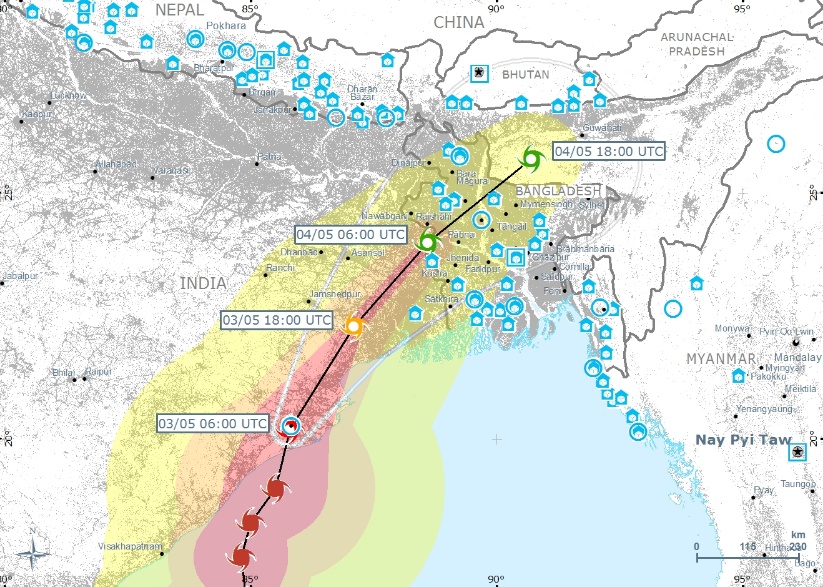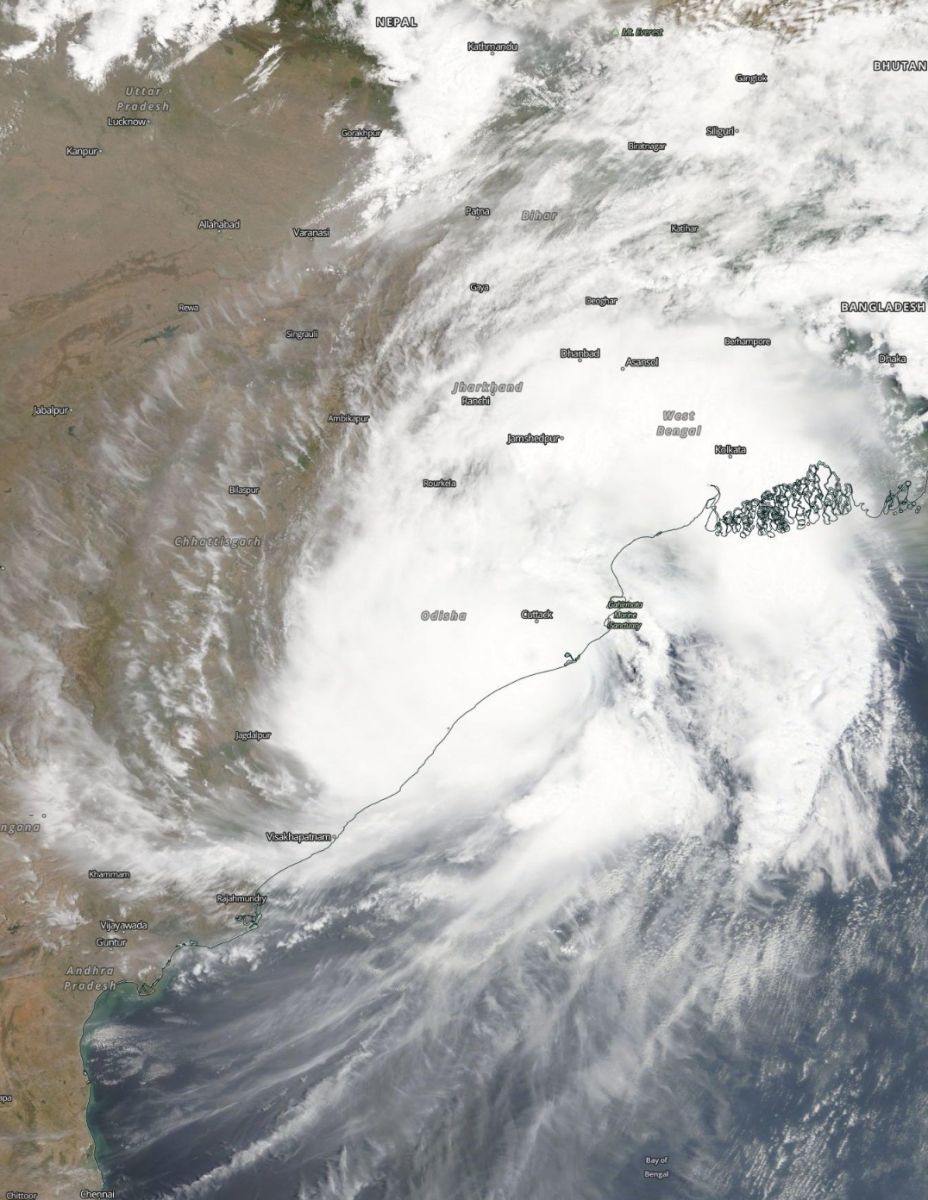Tropical Cyclone “Fani” forced one of the biggest human evacuations in history, death toll rises to 30

At least 16 people have been killed in India and another 14 in Bangladesh due to strong winds and heavy rain produced by Tropical Cyclone "Fani" since it made landfall May 3, 2019. More than 200 were injured.
The cyclone forced officials to conduct one of the biggest human evacuations in history – more than 1.2 million in India in 24 hours and another million in Bangladesh.
Odisha state officials said massive restoration work is underway in 10 000 villages and 52 urban areas ravaged by the storm.
The death toll rose to 16 late May 4: 4 in Mayurbhanj district, 3 in Puri, 3 in Bhubaneswar, 3 in Jajpur and 1 each in Keonjhar, Nayagarh and Kendrapara.
Nearly 3 million people were left without power in different parts of the state.
Officials said a large number of animals were killed by the storm, forcing them to deploy veterinary teams to dispose of the dead bodies.
Eastern Naval Command of the Indian Navy launched massive rescue and rehabilitation effort across the state, home to 46 million people.

Odisha Chief Minister Naveen Patnaik described the storm as 'rarest of rare' to hit India in years.
"Because of its rarity, the tracking and prediction was very challenging. In fact, till 24 hours of landfall, one was not sure about the trajectory it was going to take because of the predictions of different agencies," Patnaik said.
"This led to one of the biggest human evacuations in history – a record 1.2 million people were evacuated in 24 hours," he said.
Highlighting the zero-casualty cyclone preparedness policy of the Indian Government, Denis McClean, a spokesperson for the UN Office for Disaster Risk Reduction, said that 'the almost pinpoint accuracy of the early warnings from the Indian Meteorological Department had enabled the authorities to conduct a well-targeted evacuation plan, which had involved moving more than one million people into storm shelters.'
In 1999, Odisha was hit by a super-cyclone and storm surge 20 km (12.4 miles) inland, which resulted in deaths of at least 10 405 people. The 1999 Odisha cyclone (IMD designation BOB 06, JTWC designation 05B) was the strongest recorded tropical cyclone in the North Indian Ocean and among the most destructive in the region. Its highest sustained winds were 260 km/h (160 mph) and lowest pressure 912 hPa.
Although Fani was comparable to the 1999 cyclone, Odisha was ready this time thanks to improved forecasting models, intense public awareness campaigns and well-drilled evacuation plans.
West Bengal officials said Fani did not cause much damage in their state, except to several huts.


Tropical Cyclone "Fani" track. Credit: JRC, ADAM, WFP


Tropical Cyclone "Fani" on May 3, 2019. Credit: NASA Terra/MODIS
Fani entered Bangladesh on May 4 as a deep depression, affecting the coastal districts of Chattogram, Noakhali, Laxmipur, Feni, Chandpur, Borguna, Bhola, Patuakhali, Barishal, Pirozpur, Jhalokathi, Bagherhat, Khulna and Satkhira as well as their offshore islands by storm surges estimated at 0.6 – 1.2 m (2 – 4 feet) height above normal astronomical tide levels.
At least 14 people were killed and 50 injured due to tree falls and wall collapse in Barguna, Noakhali and Patuakhali, DG ECHO reported May 5.
At least 36 villages in Patuakhali, Bagerhat, Bhola and Satkhira were inundated as storm surges breached earthen dykes and overflew them, according to the National Disaster Response Coordination Centre (NDRCC).
A total of 32.28 km (20 miles) of earthen dykes were damaged.
Around 13 000 houses were fully or partially damaged in the coastal districts, including Bhola, Chandpur, Bagerhat, Khulna, Satkhira, Patuakhali and Barguna, according to the NDRCC.
Crops on 133 ha (330 acres) were totally damaged while those on 21 338 ha (52 728 acres) were partially affected.
According to the Category 1 Report for May 4 by Site Management and Site Sector in Cox’s Bazar, 144 refugees’ households representing 646 refugees are affected by the storm.
- With maximum sustained winds of 250 km/h (155 mph) on May 2, Fani became the strongest of any cyclones this early in a calendar year in the North Indian Ocean since the Bangladesh Cyclone of 1991.
- Fani is one of the strongest storms to hit India in 20 years.
- The timing of such a powerful storm is unusual, IMD said. Over the past 50 years, nearly 60% of extremely severe cyclones made landfall between October and December.
Featured image credit: TOI

Commenting rules and guidelines
We value the thoughts and opinions of our readers and welcome healthy discussions on our website. In order to maintain a respectful and positive community, we ask that all commenters follow these rules:
We reserve the right to remove any comments that violate these rules. By commenting on our website, you agree to abide by these guidelines. Thank you for helping to create a positive and welcoming environment for all.